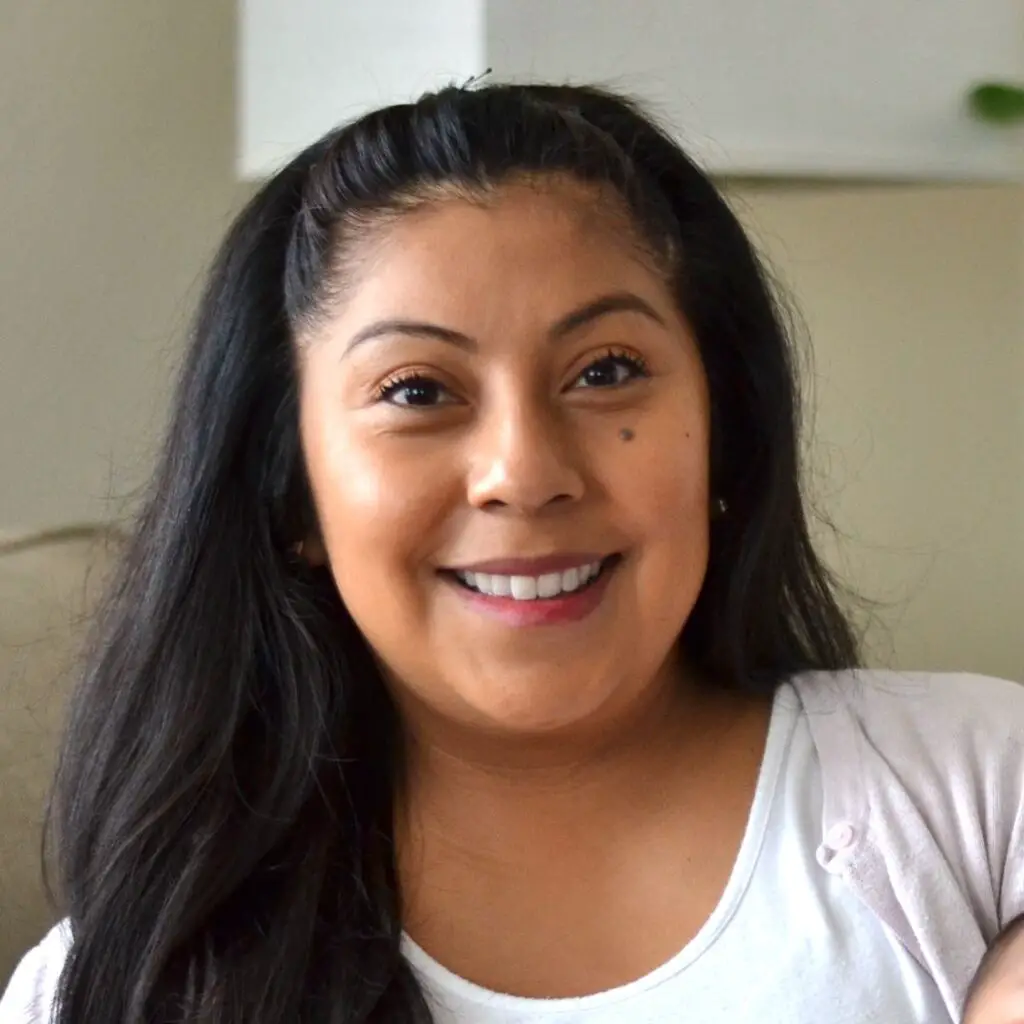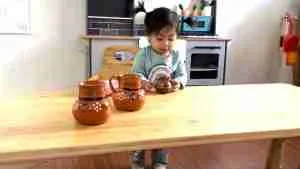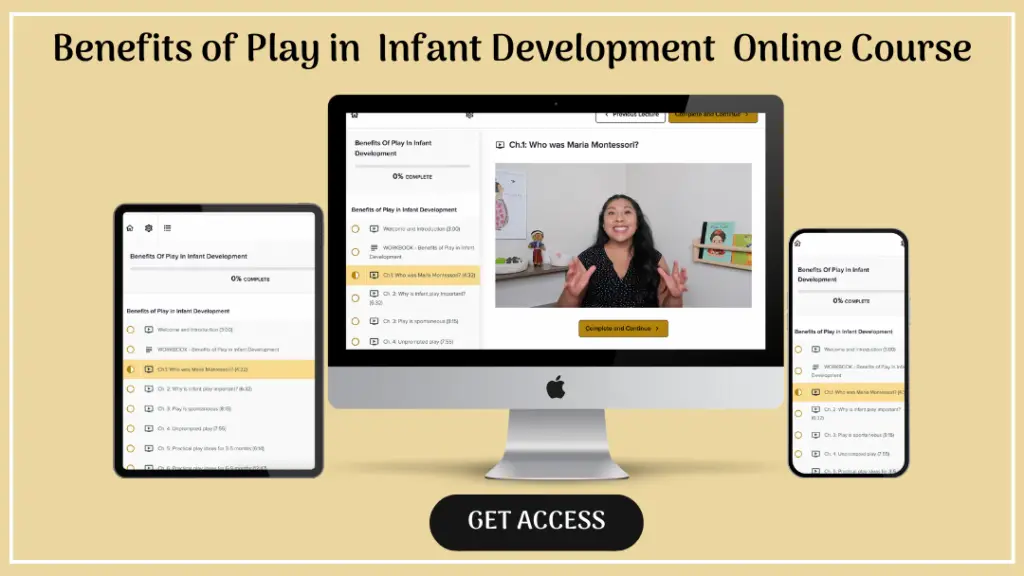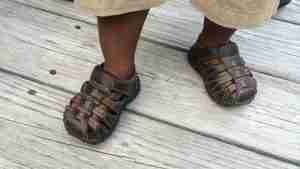
How to Start Weaning: A Guide for New Parents
Learn how to wean from breastfeeding and ensure the transition from breast to bottle is a success.

*Disclosure: I only recommend products I would use myself and all opinions expressed here are our own. This post may contain affiliate links that at no additional cost to you, I may earn a small commission. Thank you for your support!
Share this post
Weaning your baby from breastfeeding or formula feeding can be a challenging yet exciting time for both you and your little one. The process of transitioning from milk to solid food marks a major milestone in your baby’s development and signifies the start of a new and exciting phase of their life.
However, it can also be a confusing and overwhelming experience for new parents. With so many different opinions and recommendations on how to start weaning, it can be difficult to know where to start.
This guide aims to help you navigate the weaning process and ensure a smooth and enjoyable transition for both you and your baby.
I will also give you some tips for weaning breastfeeding to make the whole baby weaning process enjoyable.
What is weaning?
Weaning refers to the process of gradually introducing a baby to solid food and reducing their dependence on breast milk or formula. It is a natural part of a baby’s development and typically starts around 6 months of age.
Baby weaning is a gradual process that should be approached slowly and carefully, with the goal of providing your baby with a balanced diet and the nutrients they need for growth and development.
During baby weaning, it’s important to listen to your baby’s cues and to be patient, as every baby is different and may take a different amount of time to transition to solid food.
What are the 3 stages of weaning?
The three stages of weaning typically include:
- Introducing solid foods: This is the first stage of weaning, where you start offering your baby small amounts of solid food in addition to breastmilk or formula.
- Increasing the amount and variety of solid food: As your baby gets more comfortable with eating solid foods, you can gradually increase the amount and variety of foods they are eating.
- Gradually reducing the frequency of feedings: The final stage of weaning involves gradually reducing the frequency of feedings, until your baby is only consuming solid food and no longer relying on breastmilk or formula.

How to start weaning breastfeeding
Starting the weaning process from breastfeeding can be a challenging but natural part of a baby’s development.
It’s recommended to start offering solid food when your baby is around 6 months old and is showing signs of readiness, such as being able to sit up and support their head, reaching for and grabbing food, and showing an interest in what you are eating.
To start weaning breastfeeding, it’s best to begin slowly by offering small amounts of solid food and gradually decreasing the frequency of feedings over time.
It’s also important to listen to your baby’s cues and to be patient during this process, as every baby is different and may take a different amount of time to transition to solid food.
Tips for weaning breastfeeding
Weaning from breastfeeding can be a challenging but natural part of a baby’s development. Here are some weaning tips to make the weaning process easier for both you and your baby:
Start slowly: Gradually introducing solid food and reducing the frequency of feedings over time can help ease the transition for your baby.
Listen to your baby’s cues: Every baby is different and may take a different amount of time to transition to solid food. It’s important to listen to your baby’s cues and to be patient during the weaning process.
Offer a variety of healthy foods: Providing a balanced diet with a variety of healthy foods can help ensure that your baby is getting the nutrients they need for growth and development.
Keep breastfeeding for as long as you and your baby are comfortable: Breastmilk provides essential nutrients for your baby and can help with the transition to solid food. You can continue to breastfeed for as long as you and your baby are comfortable.
Consider your baby’s comfort: If your baby is uncomfortable during feedings or refuses to take solid food, it may be a sign that they are not ready to wean. Try to be patient and wait until your baby is ready.
Get support: Starting the weaning process can be challenging, and it’s important to have support from friends, family, or a lactation consultant.
Remember, every baby is different and the weaning process should be approached slowly and carefully, with the goal of providing your baby with a balanced diet and the nutrients they need for growth and development.
Choosing the right time to start weaning
One of the first decisions you will need to make when it comes to baby weaning is choosing the right time to start. There is no one right answer to this question, as the timing of weaning will vary from baby to baby depending on their individual needs and development.
However, the following are some general guidelines that can help you determine when it may be the right time to start weaning:
Your baby is at least 6 months old: According to the World Health Organization (WHO), it is recommended to introduce solid foods to your baby when they are at least 6 months old. This is because their digestive system has matured enough to handle solid foods and they can no longer get all the nutrients they need from milk alone.
Your baby is showing signs of readiness: Some signs that your baby may be ready for solid food include being able to sit up and support their head, reaching for and grabbing food, and showing an interest in what you are eating.
You feel comfortable and ready: Weaning can be a big change for both you and your baby, and it is important to ensure that both of you are comfortable and ready for this transition.

Introducing solid foods
Once you have determined that your baby is ready for solid foods, the next step is to start introducing them. The following are some weaning tips to help you get started:
Start with simple foods: When first introducing solid foods, it is best to start with simple and easy to digest options, such as pureed fruits and vegetables. Avoid high-allergen foods, such as nuts, dairy, and eggs, until your baby is a little older.
Offer a variety of foods: To ensure that your baby gets a balanced diet, it is important to offer a variety of different foods, including different fruits and vegetables, proteins, and grains.
Introduce one food at a time: When introducing a new food, it is best to offer it to your baby on its own for a few days, so you can observe any potential reactions or allergies.
Offer small amounts: To start weaning, begin with small amounts of food and gradually increase as your baby becomes more comfortable with eating solid foods.
Managing the transition
The weaning process can be a big change for both you and your baby, and it is important to be patient and flexible as you navigate this transition. The following are some weaning tips to help you manage the transition:
Be flexible: There will likely be days when your baby is more interested in solid food and others when they are more interested in milk. Be flexible and follow your baby’s lead.
Be patient: Weaning is a process that takes time, and it may take several weeks or even months for your baby to fully transition to solid food.
Be consistent: Consistency is key when it comes to baby weaning. Try to offer solid food at the same times each day, and stick to a routine as much as possible.
Listen to your baby’s cues: Pay attention to your baby’s cues and reactions to different foods, and adjust your weaning plan accordingly. If they seem uncomfortable or uninterested in a particular food, try offering it again at a later time.
Offer a mix of textures: As your baby becomes more comfortable with solid food, try offering a mix of textures, including mashed, pureed, and soft finger foods. This will help them develop their chewing and swallowing skills.

How to start weaning FAQs
When is the best time to start weaning my baby?
The best time to start weaning will vary from baby to baby, but it is typically recommended to start when your baby is at least 6 months old and showing signs of readiness, such as being able to sit up and support their head, reaching for and grabbing food, and showing an interest in what you are eating.
What’s the best way to begin weaning?
The best way to begin weaning is to start slowly and gradually introduce solid food while reducing the frequency of feedings over time. It’s recommended to start offering solid food when your baby is around 6 months old and is showing signs of readiness, such as being able to sit up and support their head, reaching for and grabbing food, and showing an interest in what you are eating.
How long does weaning take?
The duration of weaning can vary greatly depending on factors such as the individual baby’s development, their appetite for solid food, and the mother’s breastfeeding schedule.
Some babies may wean within a few weeks, while others may take several months or even longer. It’s important to understand that weaning is a gradual process and to be patient as your baby makes the transition to solid food.
What should I do on the first day of weaning?
On the first day of weaning, you should start with a small amount of solid food, such as pureed fruit or vegetables, and offer it to your baby in addition to their normal breastfeeding routine. It’s important to keep breastfeeding as the primary source of nutrition during the weaning process, and to introduce solid food gradually over time.
What are the signs that my baby is ready for solid food?
Some signs that your baby is ready for solid food include being able to sit up and support their head, reaching for and grabbing food, and showing an interest in what you are eating. They should also have doubled their birth weight and have a strong neck and chin control.
Should I continue breastfeeding while weaning?
Yes, it is recommended to continue breastfeeding while weaning, as breastmilk will still provide essential nutrients and immunities to your baby. Weaning can be a gradual process, so you can continue breastfeeding as much or as little as you and your baby feel comfortable with.
What foods should I introduce first when I start weaning?
When first introducing solid foods, it is best to start with simple and easy to digest options, such as pureed fruits and vegetables. Avoid high-allergen foods, such as nuts, dairy, and eggs, until your baby is a little older.
How can I ensure a smooth transition to solid food during the weaning process?
To ensure a smooth transition to solid food, it is important to be patient and flexible, offer a variety of foods, introduce one food at a time, and listen to your baby’s cues.
What if my baby refuses solid food?
It is common for babies to refuse solid food at first, especially if they are not yet ready for the change. If this happens, it is best to be patient and try again at a later time. You can also try offering the food in a different form, such as a different texture or temperature.
How long does it take to wean off breastfeeding?
The length of time it takes to wean off breastfeeding can vary greatly and depends on several factors, such as the baby’s age and development, the mother’s breastfeeding schedule, and the individual pace at which both the mother and baby are comfortable with. Some mothers and babies may wean within a few weeks, while others may take several months or even longer.
Why is early weaning not recommended?
Early weaning, or weaning a baby before they are ready, is not recommended for several reasons:
- Health benefits: Breastmilk provides essential nutrients and antibodies that are important for a baby’s growth and development, and can help protect against infections and illnesses.
- Emotional bond: Breastfeeding helps to build a strong emotional bond between the mother and baby, and early weaning can disrupt this bond.
- Unnecessary stress: Sudden weaning can cause stress and discomfort for both the mother and baby, who may have become attached to the routine of breastfeeding.
- Nutritional concerns: Introducing solid food too soon may not provide a baby with the necessary nutrients for their growth and development, and can lead to dietary imbalances.
Final thoughts on how to start weaning
Starting the weaning process can be a challenging time for both babies and parents, but with the right tips for weaning and information, it can be made smoother and more comfortable.
Whether you are nursing or bottle-feeding, it’s essential to know the signs that your baby is ready for solid food, start slow and offer a variety of options, and stick to a routine as much as possible.
Remember to be patient and flexible during this process and to listen to your baby’s cues. If you have any questions or concerns, don’t hesitate to reach out to your pediatrician for support.

Hello, I am Leslie. I am on a mission to help you support the growth and development of your child. With the right tools and proper guidance, you can navigate parenthood with confidence and assertion! My goal is to equip you with knowledge to help you construct a strong foundation for your child’s life.
Suggested articles
You May Also Like

13 Best Postpartum Products To Help With Recovery
These are 13 of the best postpartum products to help ease your recovery.

What Is A Weaning Table? 7 Reasons Why You Need One
A weaning table is a child-sized table that fosters independence and self-feeding in your infant or toddler. Your child will learn how to set the table, clean up after themselves, and learn table manners.

Montessori Weaning Table VS High Chair: Which One Is Better?
While high chairs have been the go-to option for most parents when it comes to baby-led weaning, there is another option that has been gaining popularity – the Montessori weaning table.




